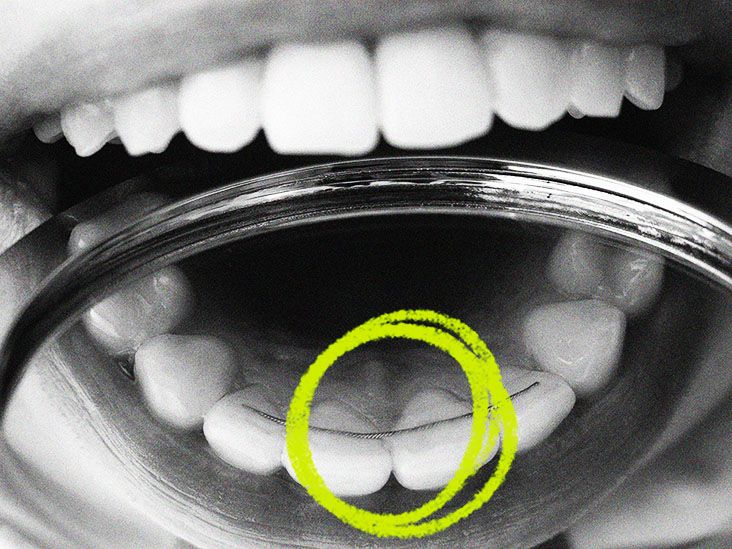Permanent Retainers: The Complete Guide to a Lasting Smile

Key points
- High Effectiveness: Many orthodontists believe permanent retainers are the most efficient way to prevent relapse, especially for the lower front teeth which are prone to shifting [^1^].
- Constant Protection: Since they are always in place, you don't have to remember to wear them, ensuring your teeth are continuously supported. This removes the risk of non-compliance that comes with removable retainers.
- Discreet: Bonded to the back (lingual side) of your teeth, the retainer is virtually invisible to others.
- Durability: With proper care, a bonded retainer can last for up to 20 years before needing replacement [^2^].
After months or years of orthodontic treatment, the final step to preserving your perfectly aligned smile is retention. One popular option is the permanent retainer, a solution designed to hold your teeth in place for the long haul. But is this "set it and forget it" option truly permanent, and is it the right choice for you?
This comprehensive guide synthesizes insights from leading dentists, orthodontists, and patient experiences to cover everything you need to know about permanent retainers, from their benefits and drawbacks to cost, care, and potential complications.
What Exactly is a Permanent Retainer?
A permanent retainer—more accurately called a bonded or fixed retainer—is a thin, custom-fitted wire that is glued to the back of your teeth, typically the front four to six lower teeth. Unlike removable retainers that you take in and out, a bonded retainer stays in your mouth 24/7.
According to WebMD, it's usually made of a single wire of metal (like stainless steel) or a strong fiber, which is affixed using a dental bonding agent similar to what's used for tooth-colored fillings [^2^]. The primary goal is to prevent teeth from shifting back to their original positions, a process known as orthodontic relapse.
 Image Source: Medical News Today
Image Source: Medical News Today
Dr. Shahira Saad, a general and cosmetic dentist, emphasizes the necessity of retention, stating, "Many patients are unaware that our teeth are constantly shifting, whether or not they have had braces... The number one cause of orthodontic relapse is not wearing a retainer" [^newsweek^].
The Pros and Cons of Permanent Retainers
Making an informed decision requires weighing the benefits against the potential drawbacks. Here’s a balanced look at what to expect.
Advantages: The "Set It and Forget It" Appeal
- High Effectiveness: Many orthodontists believe permanent retainers are the most efficient way to prevent relapse, especially for the lower front teeth which are prone to shifting [^1^].
- Constant Protection: Since they are always in place, you don't have to remember to wear them, ensuring your teeth are continuously supported. This removes the risk of non-compliance that comes with removable retainers.
- Discreet: Bonded to the back (lingual side) of your teeth, the retainer is virtually invisible to others.
- Durability: With proper care, a bonded retainer can last for up to 20 years before needing replacement [^2^].
Disadvantages: The Hidden Challenges
- Difficult Oral Hygiene: This is the most significant drawback. Cleaning around the wire is challenging. "You have to treat them almost like a dental bridge, where you're using a floss-threader to run floss underneath the wire," explains aesthetic dentist Dr. Michael Apa [^allure^]. Without meticulous cleaning, plaque and tartar can accumulate.
- Increased Health Risks: Poor hygiene around the retainer can lead to cavities, gum inflammation (gingivitis), and even bone loss over time. In a revealing article for Allure, one patient discovered significant hidden buildup under her retainer, which was only visible with advanced dental imaging [^allure^].
- Dietary Restrictions: Biting into hard foods (like hard candy, nuts, or ice) or sticky foods can bend or break the wire, requiring a trip to the orthodontist for repair.
- Not Truly "Permanent": Despite the name, these retainers can and do fail. Studies show a significant failure rate, primarily from the wire debonding from a tooth or fracturing. A systematic review found an overall failure rate of 35.22%, which increases the longer the retainer is in place [^lifecycle-study^].
Permanent vs. Removable Retainers: Which Is Right for You?
The choice between a permanent and removable retainer depends on your original dental issue, your lifestyle, and your commitment to oral hygiene. Some orthodontists even recommend a hybrid approach: a permanent retainer on the lower teeth and a removable one for the upper arch.
Here is a quick comparison to help guide your discussion with your orthodontist:
| Feature | Permanent (Bonded) Retainer | Removable Retainer (e.g., Essix, Hawley) |
|---|---|---|
| Effectiveness | Highly effective when intact; works 24/7 | Effective only if worn as prescribed |
| Convenience | No daily action required | Must be removed for eating/drinking and cleaned daily |
| Visibility | Invisible from the front | Can be visible (Hawley) or nearly invisible (clear Essix) |
| Oral Hygiene | Difficult; requires special tools | Easy; remove to brush and floss normally |
| Durability | Can last for decades but may break | Prone to being lost, broken, or warped if not cared for |
| Cost | Higher initial cost ($150-$850 per arch) | Lower initial cost but may need frequent replacement |
Living with a Permanent Retainer: A Guide to Care and Maintenance
If you and your orthodontist decide on a bonded retainer, diligent care is non-negotiable for long-term oral health.
Daily Oral Hygiene Routine
Proper cleaning is essential to prevent the problems associated with bonded retainers.
- Brushing: Brush thoroughly around the retainer from all angles, ensuring the bristles reach between the wire and your teeth. An electric toothbrush can be more effective at removing plaque.
- Flossing: You cannot floss normally. You must use a tool to get the floss under the wire.
- Floss Threader: A plastic needle-like tool that helps guide floss under the wire.
- Interdental Brushes: Tiny brushes that can clean between the teeth and around the wire.
- Water Flosser: A device that shoots a pressurized stream of water to dislodge food and plaque. Many dentists highly recommend this for patients with bonded retainers.
 Image Source: Teeth Talk Girl on YouTube
Image Source: Teeth Talk Girl on YouTube
Regular Check-ups are Crucial
"It's so hard. There's nothing you could do at home that could make this better," says Dr. Sharon Huang, referring to retainers installed with excess glue that makes cleaning impossible [^allure^]. This is why regular visits to your dentist and orthodontist are critical. They can perform professional cleanings and check that the retainer is intact and not causing any harm. Dr. Daniel Grauer recommends seeing an orthodontist "every three to four years" to ensure the retainer hasn't bent and isn't inadvertently moving your teeth [^allure^].
Common Problems and What to Do
What if my retainer breaks or feels loose?
Contact your orthodontist's office immediately. A broken or debonded retainer is no longer effective, and your teeth can begin to shift surprisingly quickly. Do not attempt to fix it yourself. Leaving a broken wire can also irritate your tongue or gums.
How Much Do Permanent Retainers Cost?
The cost can vary widely depending on your location and orthodontist.
- Initial Placement: Expect to pay between $150 to $500 per arch, according to WebMD [^2^]. Some sources, like Allure, report costs as high as $850 per arch for advanced, custom-made models [^allure^].
- Repairs and Replacement: The cost to repair or replace a broken retainer is often similar to the initial placement fee.
Often, the cost of the first set of retainers is included in the total price of your orthodontic treatment. Be sure to clarify this with your provider.
Can a Permanent Retainer Be Removed?
Yes, an orthodontist or dentist can remove a bonded retainer. Removal might be necessary if it's damaged beyond repair, causing intractable hygiene problems, or if you simply prefer a removable option. After removal, you will almost certainly need a removable retainer to wear (likely at night) to prevent your teeth from shifting.
The Final Word
A permanent retainer can be an excellent tool for maintaining a straight smile with minimal daily effort. However, the term "permanent" is misleading. It requires a permanent commitment to meticulous oral hygiene and regular professional monitoring to prevent serious dental issues.
Ultimately, the decision should be a collaborative one between you and your orthodontist, taking into account your dental history, lifestyle, and willingness to commit to the specialized care required.
References
[^1^]: Medical News Today. "Permanent retainer: Pros and cons, cost, and removal." [^2^]: WebMD. "What to Know About Permanent Retainers." [^invisalign^]: Invisalign.com. "Permanent Retainers | Invisalign.com." [^newsweek^]: Newsweek. "Dentist reveals exactly how long you should be wearing your retainer for." [^allure^]: Allure. "What I Wish I'd Known Before Getting a 'Permanent' Retainer." [^lifecycle-study^]: Synthesis from "The Lifecycle and Failure Rate of 'Permanent' Retainers" survey results provided.

About the author
Benjamin Carter, MD, is a board-certified otolaryngologist specializing in head and neck surgery, with an expertise in treating throat cancer. He is an associate professor and the residency program director at a medical school in North Carolina.